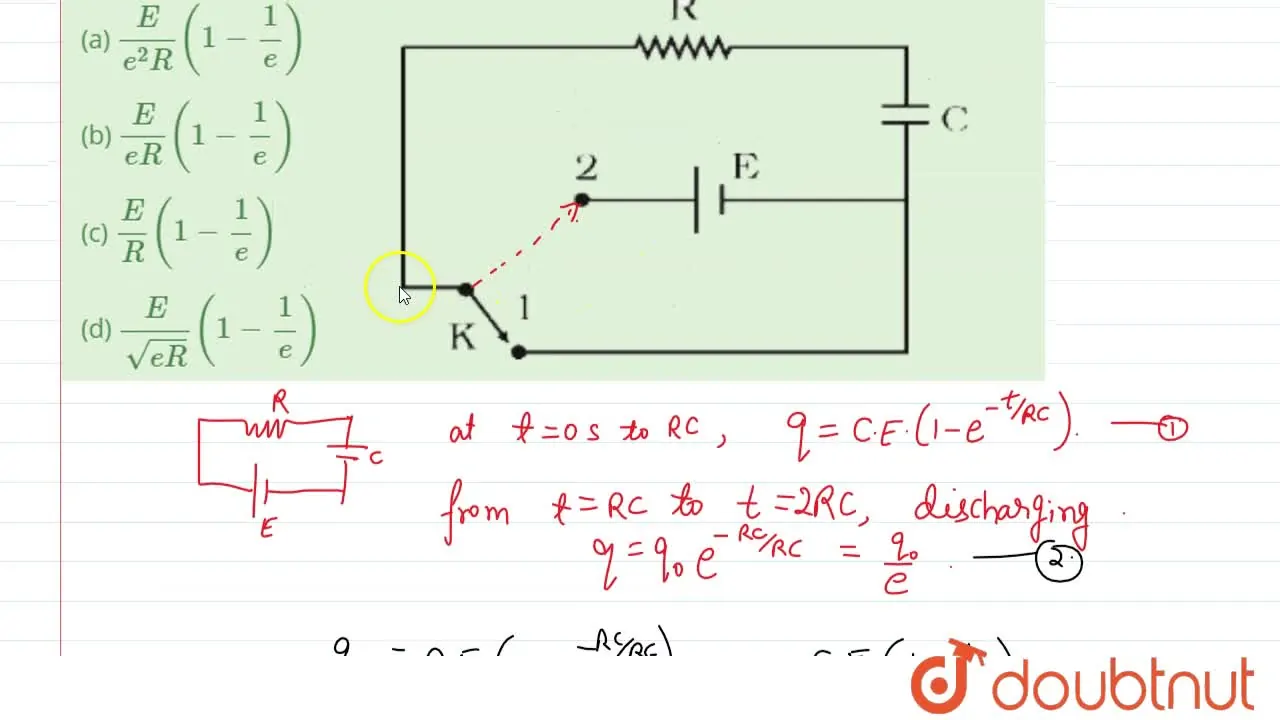In the shown circuit involving a resistance Rω, capacitor of capacitance C farad and an ideal cell of emf E volts, the capacitor is initially uncharged and the key is in position 1. At t = 0, second the key is pushed to position 2 for t0=RC second and then key is pushed back to position 1 for t0=RC seconds. This process is repeated again and again. Assume the time taken to push key from position 1 to 2 and vice versa to be negligible.
The current through the resistance at seconds is:

(a) Ee2R(1−1e)
(b) EeR(1−1e)
(c) ER(1−1e)
(d) E√eR(1−1e)
The correct Answer is:D
For t=0 to t0=RC seconds, the circuit is of charging type. The charging equation for this time is
q=CE(1−e−t/RC)
Therefore the charge on capacitor at time t0=RC is q0=CE(1−1e)
For t=RC to t=2RC seconds, the circuit is of discharging type.
The charge and current equation for this time is
q=q−(2RC−RC)RC0=q0e=1eCE(1−1e)andi=q0RCe−(1.5RC−RC)RC=q0√eR(1−1e).
Respectively.
Since the capacitor gets more charged up from t=2RC to t=3RC than the interval t=0 to t=RC, the graph respresenting the charge variation is as shown in figure.
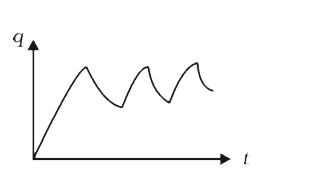
Related Playlists
- BOOK - VMC MODULES ENGLISHCHAPTER - CAPACITORSEXERCISE - JEE Main (Archive) LEVEL-136videos
CAPACITORS
- BOOK - VMC MODULES ENGLISHCHAPTER - CAPACITORSEXERCISE - JEE Advance ( Archive ) LEVEL 21videos
CAPACITORS
- BOOK - VMC MODULES ENGLISHCHAPTER - CAPACITORSEXERCISE - LEVEL 1 (MCQs)60videos
CAPACITORS
- BOOK - VMC MODULES ENGLISHCHAPTER - BASIC MATHEMATICS & VECTORSEXERCISE - Impeccable50videos
BASIC MATHEMATICS & VECTORS
- BOOK - VMC MODULES ENGLISHCHAPTER - CURRENT ELECTRICITYEXERCISE - IN-CHAPTER EXERCISE-F10videos
CURRENT ELECTRICITY
Similar Questions
In the shown circuit involving a resistance Rω, capacitor of capacitance C farad and an ideal cell of emf E volts, the capacitor is initially uncharged and the key is in position 1. At t = 0, second the key is pushed to position 2 for t0=RC second and then key is pushed back to position 1 for t0=RC seconds. This process is repeated again and again. Assume the time taken to push key from position 1 to 2 and vice versa to be negligible.
Then the variation of charge on capacitor with time is best represented by
 View Solution
View SolutionIn the circuit shown key is closed at t=0 with capacitor initially uncharged.
 View Solution
View SolutionInitially the capacitor is uncharged find the charge on capacitor as a function of time, if switch is closed at t=0.
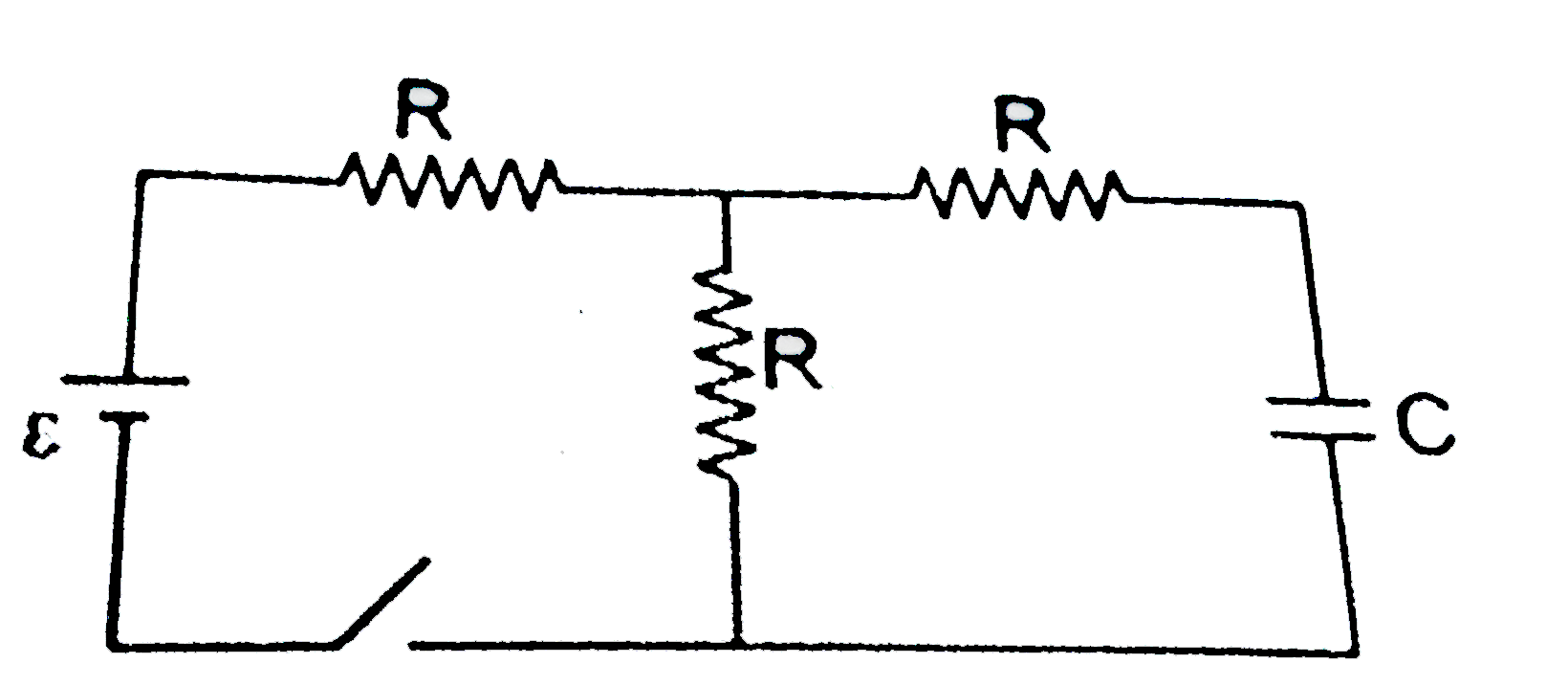 View Solution
View SolutionPassage-III
In the circuit shown, the battery is ideal with emf V. The capacitor is initially uncharged. The switch is closed at time t = 0

The current in the branch BE at t=∞ isView SolutionIn the circuit shown below, the key K is closed at t = 0. The current through the battery is
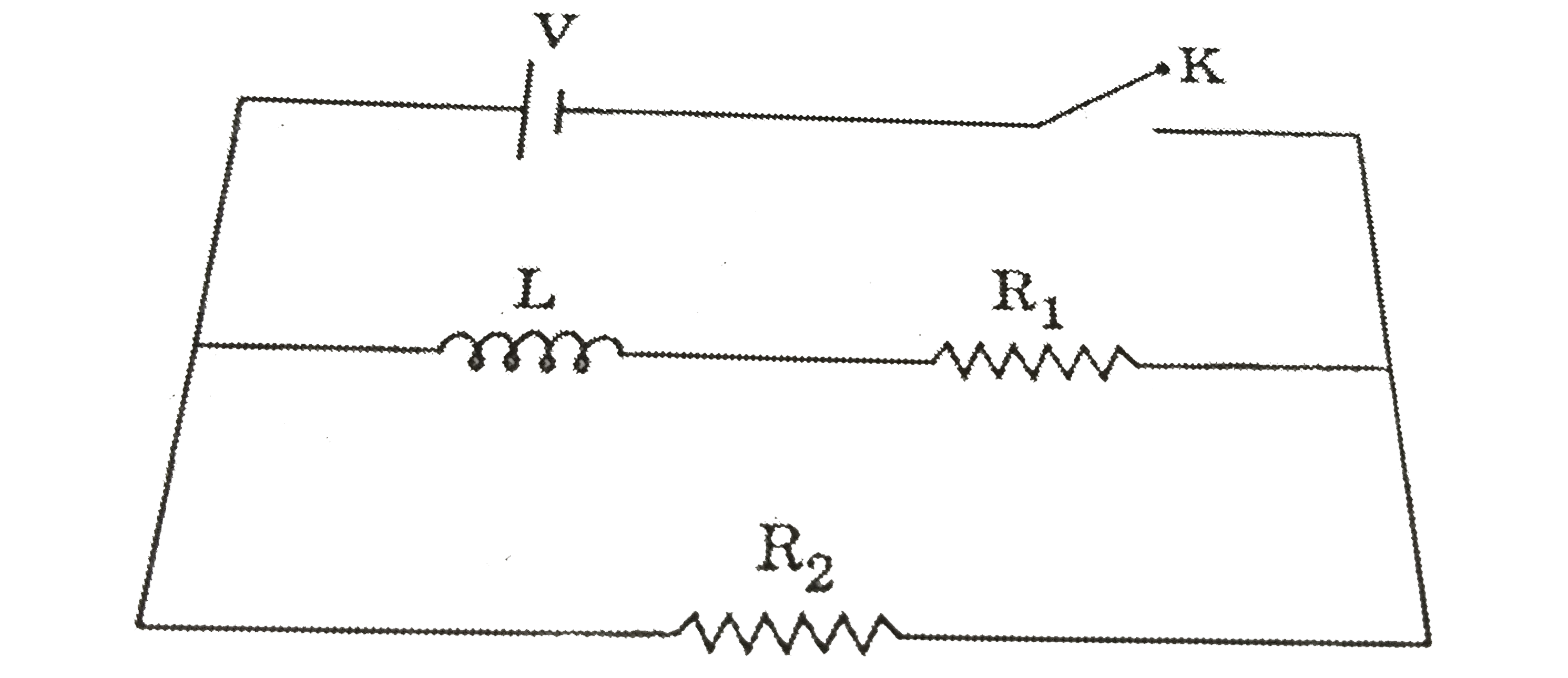 View Solution
View SolutionIn the circuit shown below, the key K is closed at t =0. The current through the battery is
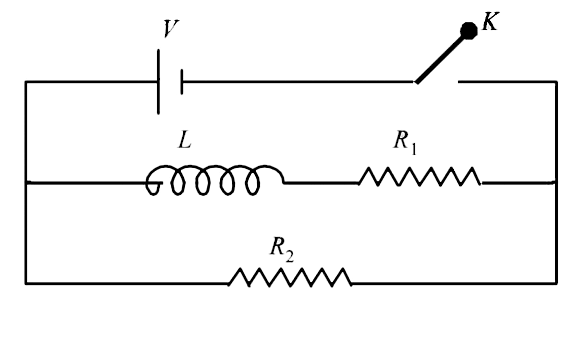 View Solution
View SolutionSwitch is in position A for long time. At time t = 0 it is shifted to position B. Find the maximum charge that will accumulate on capacitor
 View Solution
View SolutionIn the adjoining circuit, the capacitor is initially uncharged. The current through the resistor AB immediately after the key K is pressed is __________ mA.
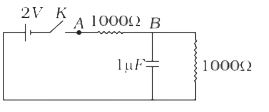 View Solution
View SolutionIn the circuit shown, the capacitor C1 is initially charged with charge q0. The switch S is closed at time t = 0 . The charge on C2 after time t is
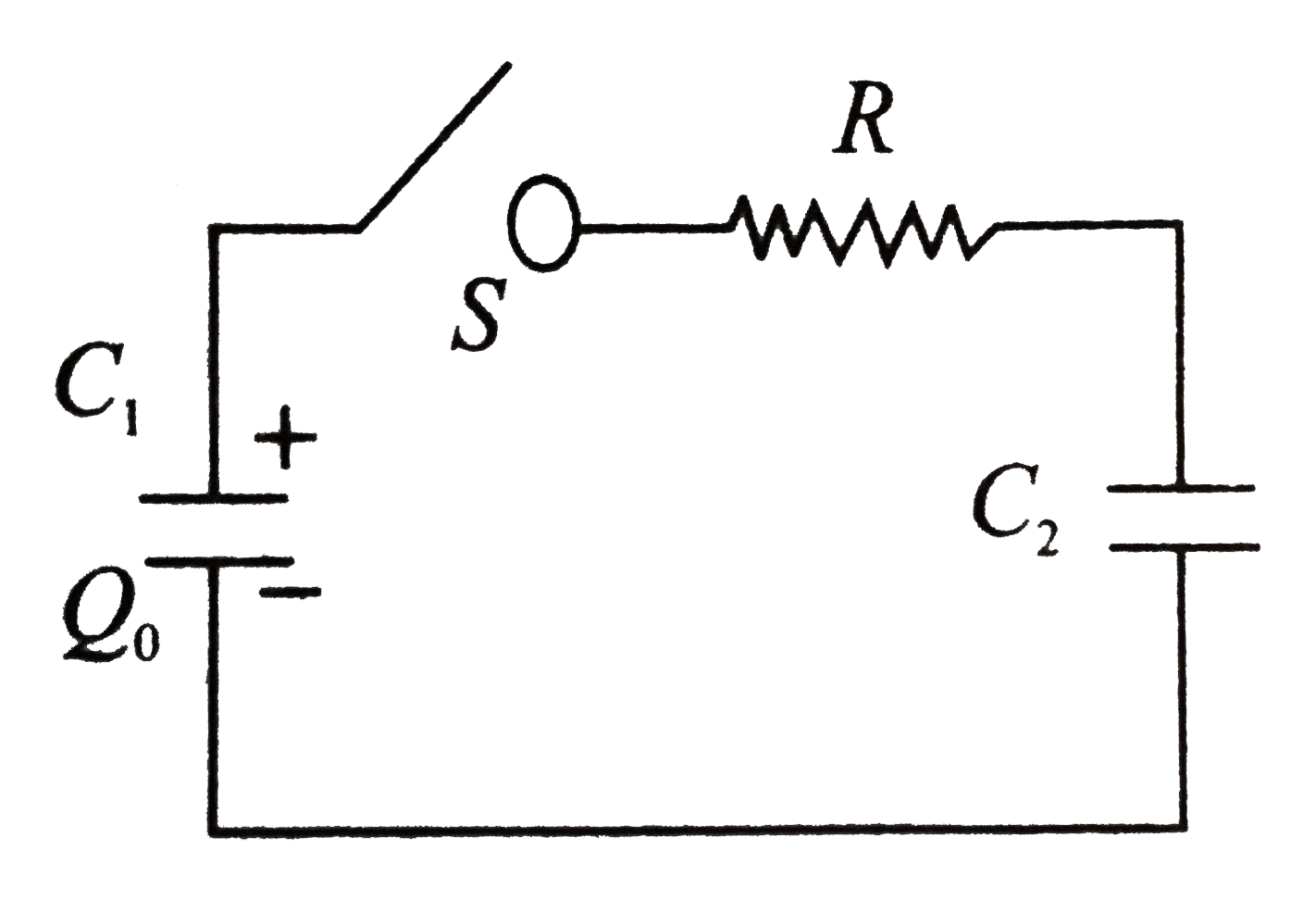 View Solution
View SolutionPassage-III
In the circuit shown, the battery is ideal with emf V. The capacitor is initially uncharged. The switch is closed at time t = 0
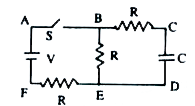
The current in branch containing capacitors at any time t isView Solution

